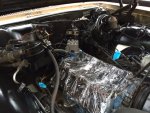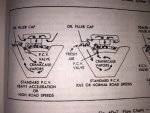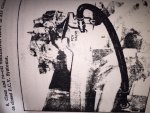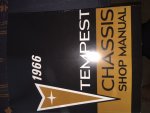I just took home a 1966 Pontiac Lemans two weeks ago and getting familiarized with the car.
The valve cover was leaking so I took it off to replace the gasket. Upon inspection, the rockers had a lot of oil crud - the type you don't want to see.
So I took off the heads and found some of the water ports clogged. I drilled out the blocked ports and cleaned them out. Both on the head and the block. After clean them out with compressed air.
The question is: Is this the right time to do a valve job on the head? A friend of mine told me if you refresh the head, it may result in more improved, higher compression and the block may start smoking oil. Is that theory correct? He said I should do both heads and engine block at the same time to do it right. This is a $3,500 job!
Meanwhile I just plan to put back the head since now I've seen what I'm dealing with. The heads look ok (aside from the oil crud stuff) and the pistons and walls look good.
What do you guys think?
I cleaned both heads and block with engine degreaser, air dried them and plan to tow the car to a shop to put the engine together.
While the heads are out, took the opportunity to paint the engine bulkhead and sides with Satin Black rustoleum.
See pics below



Thank you
Al
The valve cover was leaking so I took it off to replace the gasket. Upon inspection, the rockers had a lot of oil crud - the type you don't want to see.
So I took off the heads and found some of the water ports clogged. I drilled out the blocked ports and cleaned them out. Both on the head and the block. After clean them out with compressed air.
The question is: Is this the right time to do a valve job on the head? A friend of mine told me if you refresh the head, it may result in more improved, higher compression and the block may start smoking oil. Is that theory correct? He said I should do both heads and engine block at the same time to do it right. This is a $3,500 job!
Meanwhile I just plan to put back the head since now I've seen what I'm dealing with. The heads look ok (aside from the oil crud stuff) and the pistons and walls look good.
What do you guys think?
I cleaned both heads and block with engine degreaser, air dried them and plan to tow the car to a shop to put the engine together.
While the heads are out, took the opportunity to paint the engine bulkhead and sides with Satin Black rustoleum.
See pics below



Thank you
Al
Last edited:







